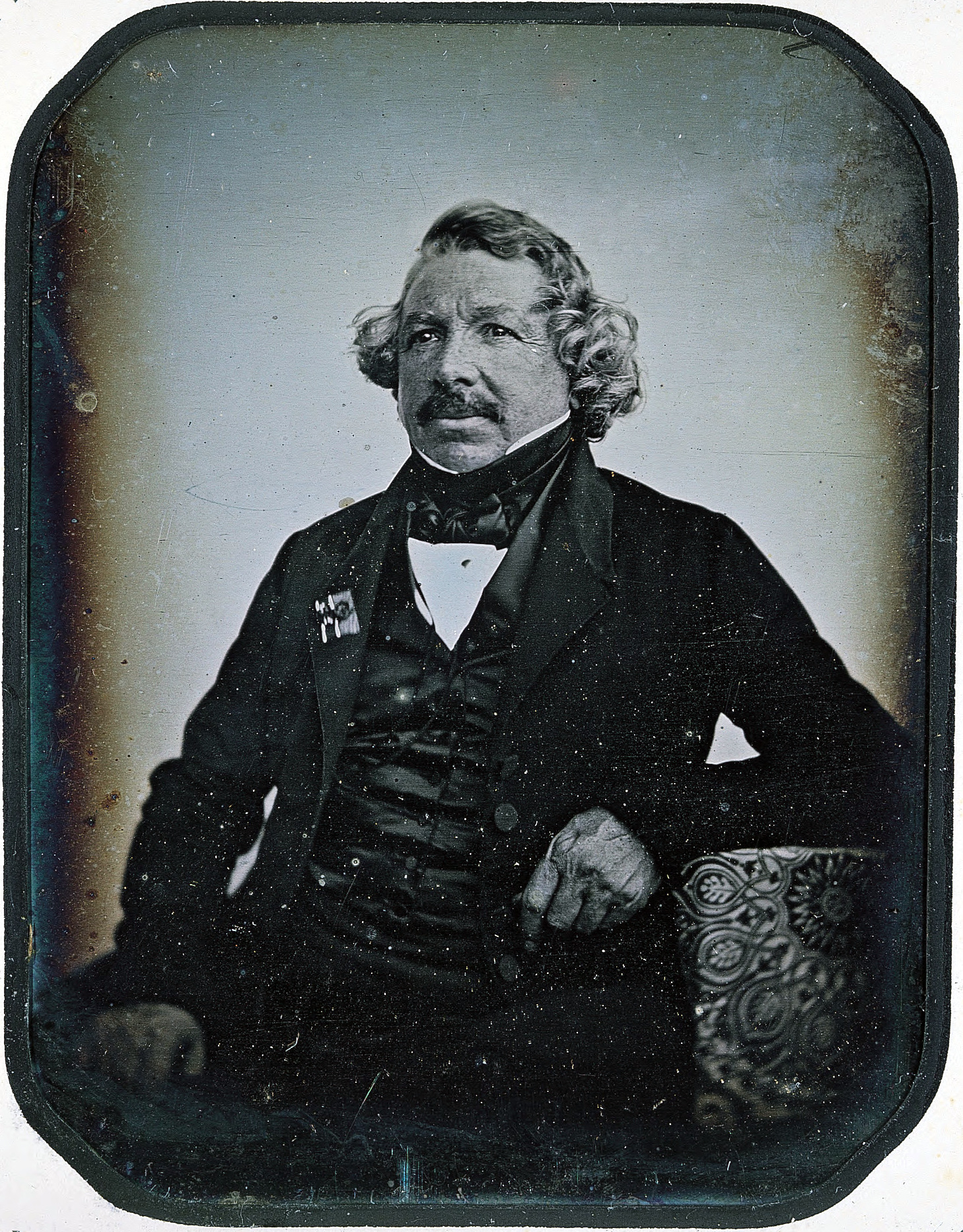On what is Louis Daguerre’s 224th birthday, here’s a classic 1844 daguerreotype, an image of the man himself that was taken by Jean-Baptiste Sabatier-Blot. Daguerre was an artist and physicist who perfected his method of picture making in 1839, which popularized the art of the photograph. He died in 1851, seven years after this image was made, and by then modern photography had already begun to eclipse the Frenchman’s process. An outline of the rise and fall of the daguerreotype from “Sun Pictures,” published in the January 3, 1886 Brooklyn Daily Eagle:
“Daguerreotype was the name under which printing by light first became generally known, some forty-five years ago; true it is, that pictures had previously been taken by means of the sun by Niepce as far back as 1816, but the method by which these were produced was a very imprefect one, and it was not until 1839, when Daguerre published his improved process, that photography was shown to be an art capable of practical employment. We may consider, therefore, daguerreotype as the first steps in the art of photography. The process consists, as is well known, in rendering a polished silver surface sensitive to the action of light, by treating it with iodine, and thus forming iodide of silver. This compound possesses the power of absorbing, so to speak any image that is reflected upon its surface, an invisible picture being produced, which may afterward be developed or rendered visible by treatment with mercury. By means of this mode of proceeding, therefore, we are enabled to produce upon a metal plate a fixed reflection or image of any object, and pictures thus obtained are termed daguerreotypes. They are very faithful productions and possessed of much detail and delicacy of light and shade, but they possess, unfortunately, many serious disadvantages. They are not permanent, they are costly in production, and the image, being depicted upon a highly polished surface, it is difficult to examine it, excepting when the light falls upon it from a particular direction; lastly, only one picture can be obtained at each operation, and the process must be repeated for the production of every subsequent copy required. In 1851 a new era dawned upon photography.”

